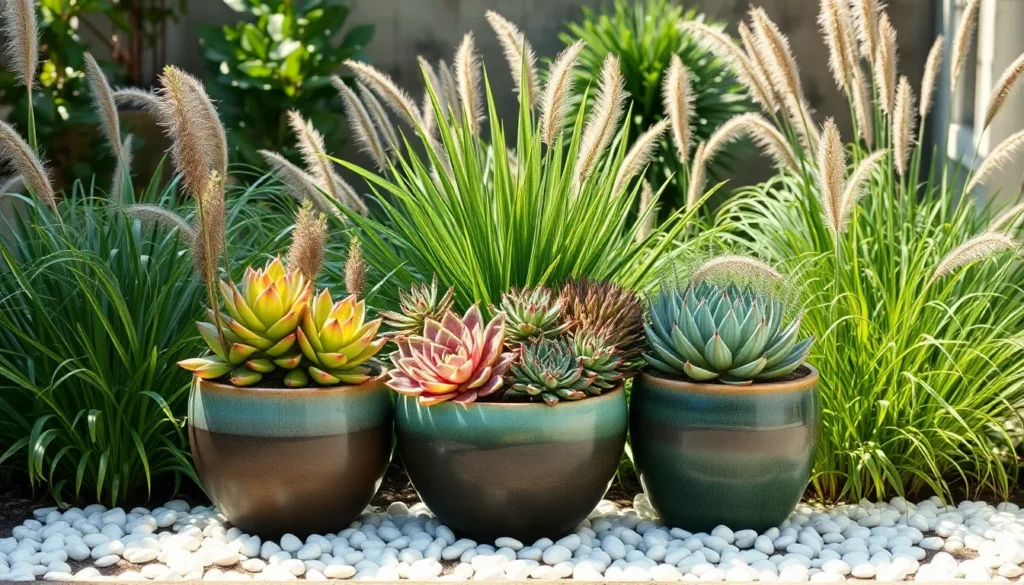Imagine stepping into your very own green sanctuary where nature’s beauty thrives with minimal effort—welcome to the world of low-maintenance gardening! Whether you’re a seasoned horticulturist or a beginner nurturing your first plant, this guide is your gateway to cultivating a garden that practically takes care of itself, leaving you more time to simply enjoy its vibrant splendor.
In this carefully curated list of indoor plants, you’ll find choices that are not only easy to care for but also rewarding to grow. These botanical gems are perfect for those who wish to add a touch of greenery to their lives without the stress of high-maintenance demands, providing you with the confidence to succeed effortlessly.
By embracing these low-maintenance plants, you’re not just enhancing your home; you’re also reaping the countless benefits they bring, from improved air quality to the joy of watching life unfurl. Get ready to embark on a gardening journey that promises beauty, ease, and the satisfying thrill of success, all with plants that are as resilient as they are delightful.
Succulent Collection (Drought-Resistant Wonders)
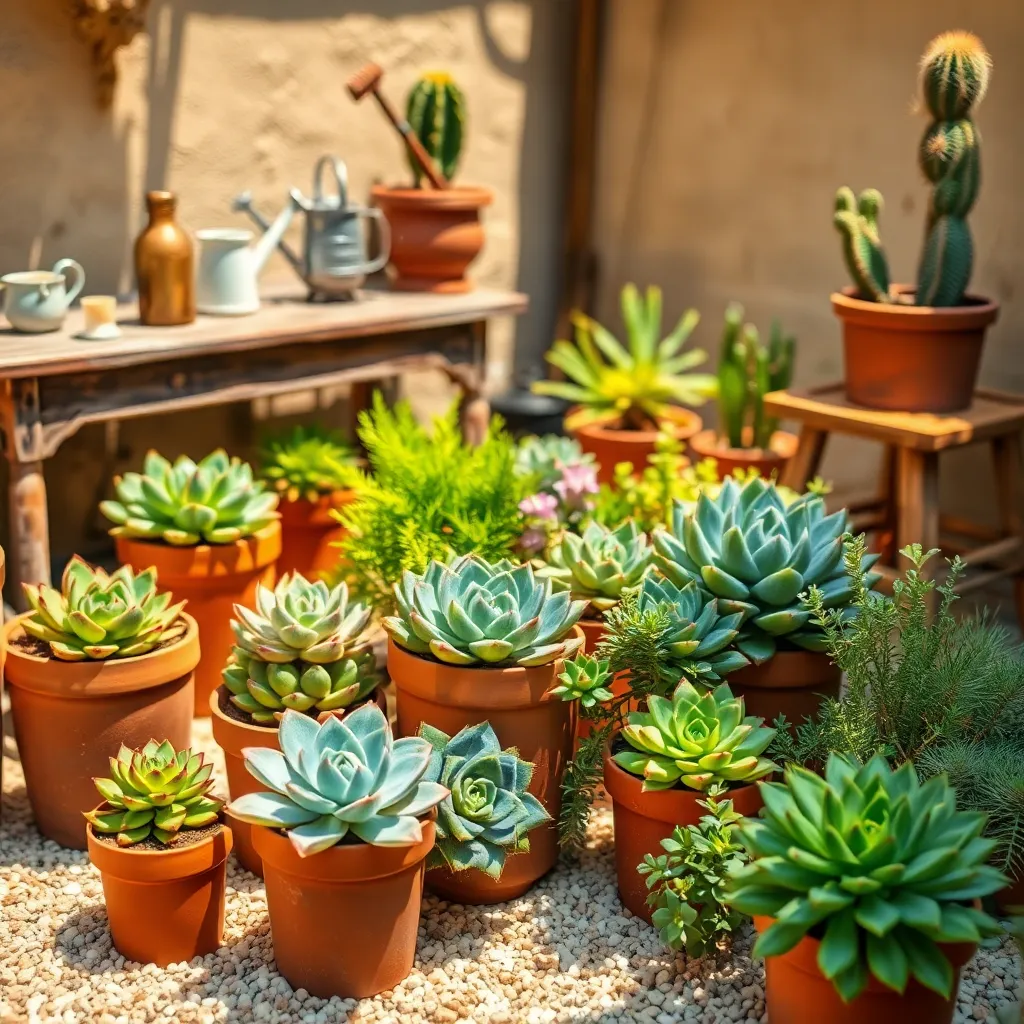
Succulents are the perfect choice for anyone looking to create a low-maintenance garden with a touch of exotic flair. These resilient plants are not only drought-resistant but also come in a variety of shapes and textures, making them an attractive addition to any garden.
To ensure your succulents thrive, place them in a sunny location where they can receive at least six hours of sunlight daily. Well-draining soil is crucial—consider using a cactus mix or a blend of regular potting soil with sand or perlite to enhance drainage.
Watering succulents requires a bit of restraint; they prefer to dry out between waterings. A good rule of thumb is to water them once every two to three weeks, adjusting based on the humidity and temperature of your environment.
For those looking to expand their collection, propagation is an exciting and simple process. Many varieties can be propagated from leaves or cuttings, allowing you to grow new plants from your existing ones with minimal effort.
Perennial Grasses (Year-Round Structure)
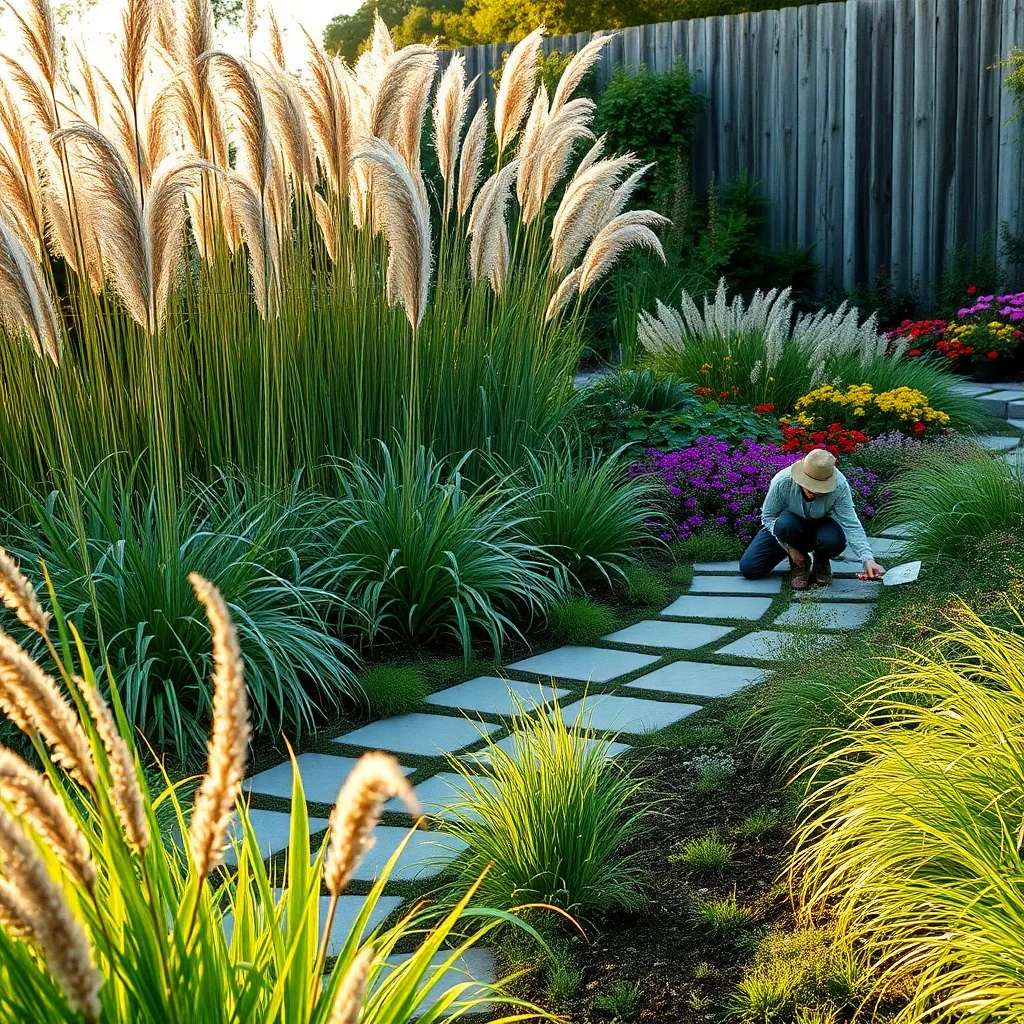
Perennial grasses bring a sense of movement and texture to your garden, providing year-round interest with minimal effort. These grasses require little more than occasional trimming to maintain their beauty, making them ideal for low-maintenance gardeners.
To ensure optimal growth, plant perennial grasses in well-draining soil with access to full sun for at least six hours a day. Most varieties are drought-tolerant, needing water only during prolonged dry spells, making them perfect for conserving water resources.
For beginners, try starting with varieties like switchgrass or blue fescue, which are hardy and adaptable to various conditions. More advanced gardeners might experiment with ornamental grasses like miscanthus, which offer stunning plumes and a dramatic presence in larger landscapes.
To keep your grasses looking their best, cut them back to about 6 inches in early spring before new growth begins. This simple pruning step rejuvenates the plants, encouraging lush, healthy foliage and robust growth throughout the season.
Self-Watering Planters (Effortless Hydration)
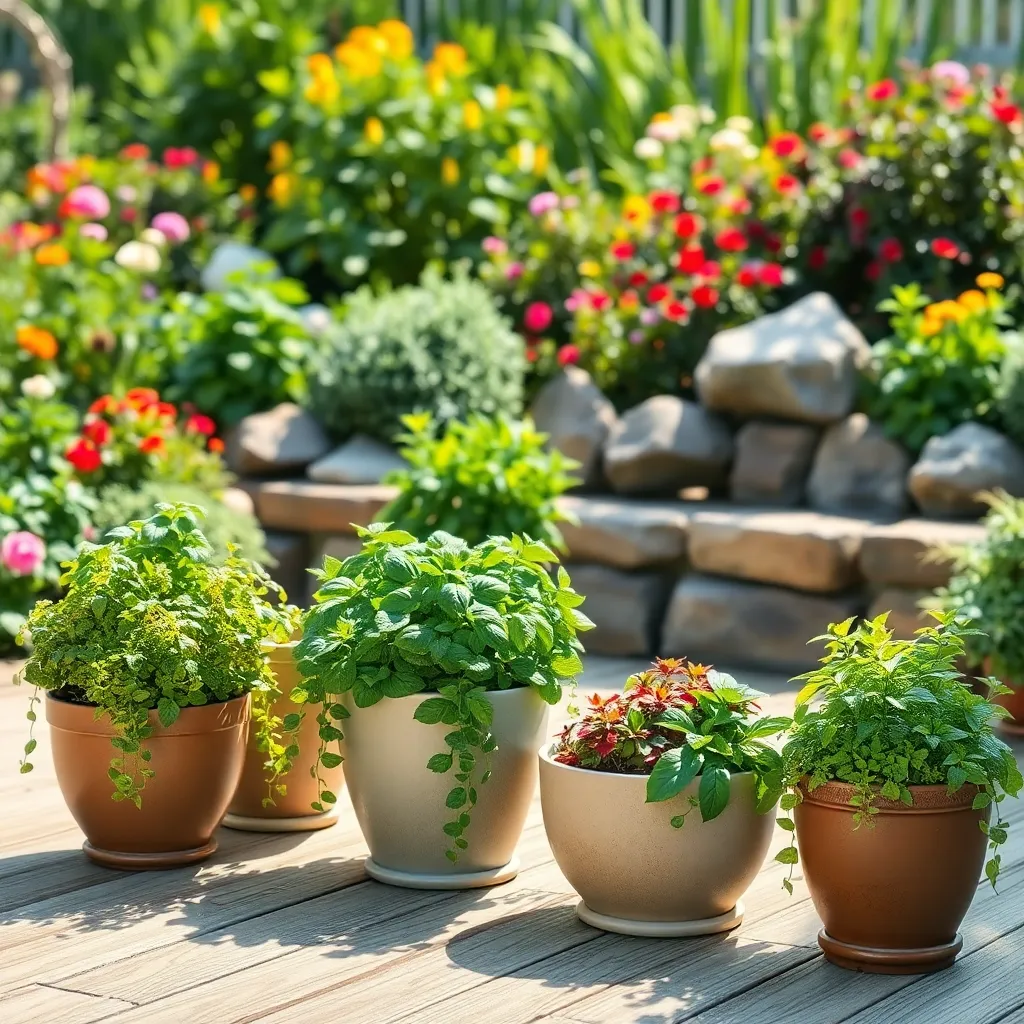
Self-watering planters are an excellent choice for gardeners seeking a low-maintenance solution for their plants. These planters use a reservoir to provide consistent moisture to the soil, reducing the need for frequent watering.
To set up a self-watering planter, fill the reservoir at the bottom of the container with water. Make sure the soil is well-draining and rich in organic matter, allowing roots to access moisture efficiently.
For best results, choose plants that thrive with consistent moisture levels, such as herbs and leafy greens. These plants will benefit from the steady hydration provided by the self-watering system, promoting robust growth.
Advanced gardeners might consider using a moisture meter to monitor the soil’s wetness, ensuring it doesn’t become overly saturated. Additionally, it’s essential to periodically clean the reservoir to prevent algae buildup and ensure optimal performance.
Mulching Techniques (Weed Suppression and Moisture Retention)
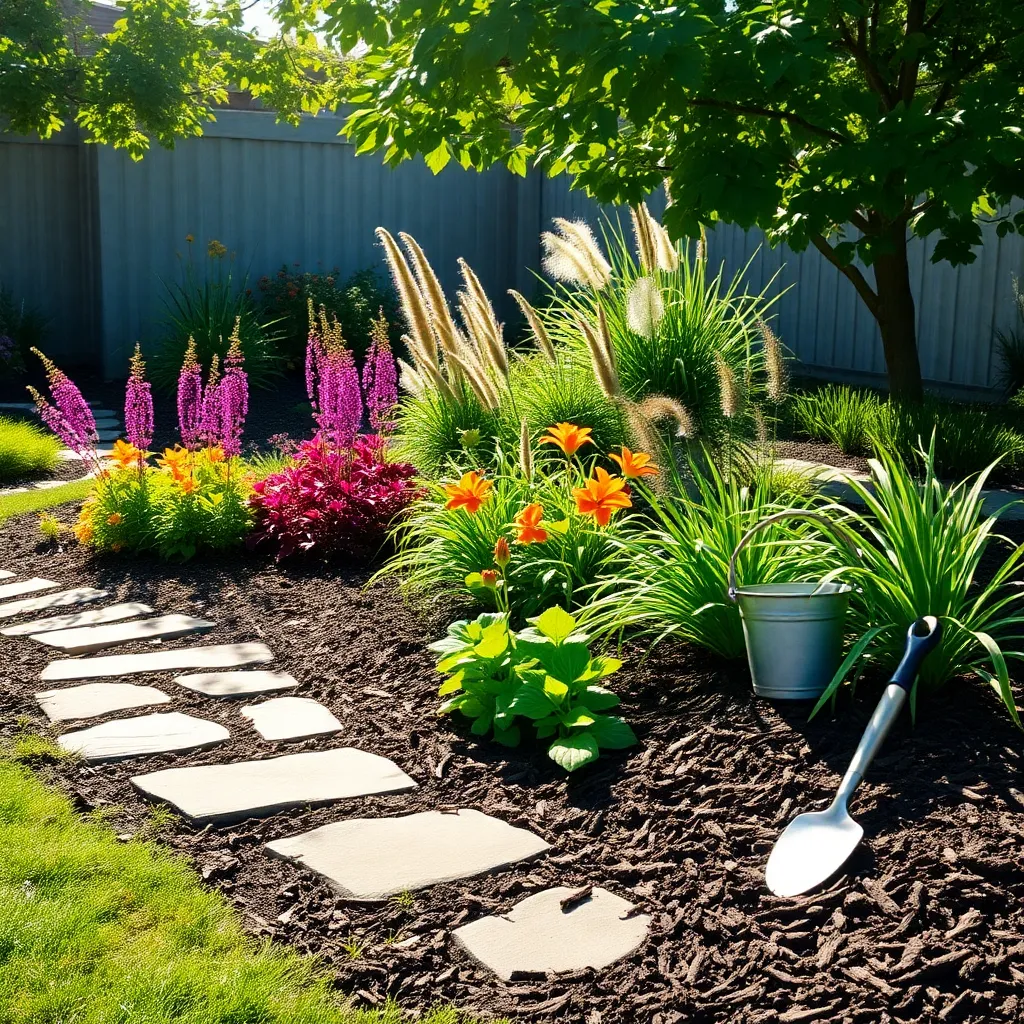
Mulching is a simple yet effective technique to maintain a low-maintenance garden. By covering the soil with a layer of organic or inorganic material, you can significantly reduce weed growth and conserve moisture. Organic mulches like shredded bark, straw, or wood chips gradually decompose, enriching the soil with nutrients. In contrast, inorganic mulches such as pebbles or landscape fabric offer a long-lasting solution without the need for frequent replacement.
When applying mulch, ensure it is spread evenly around your plants, maintaining a depth of about 2 to 4 inches. This depth is critical as it suppresses weeds effectively while allowing water to penetrate the soil. Avoid piling mulch against plant stems or trunks, as this can lead to rot and other diseases. Instead, maintain a small gap around each plant to promote air circulation.
For gardeners aiming to enhance soil fertility, consider using compost as a mulch. Compost not only suppresses weeds but also provides a slow-release source of nutrients, improving plant health over time. For those in areas with heavy rainfall, using a coarser mulch like wood chips can prevent compaction, ensuring your plants have access to both air and water.
Advanced gardeners can experiment with layered mulching, a technique that combines different materials for maximum benefit. Start with a layer of newspaper or cardboard to block sunlight, followed by organic mulch to add nutrients and improve soil structure. This method is particularly effective for establishing new garden beds, creating a rich, weed-free environment for your plants to thrive.
Native Wildflowers (Pollinator-Friendly and Resilient)
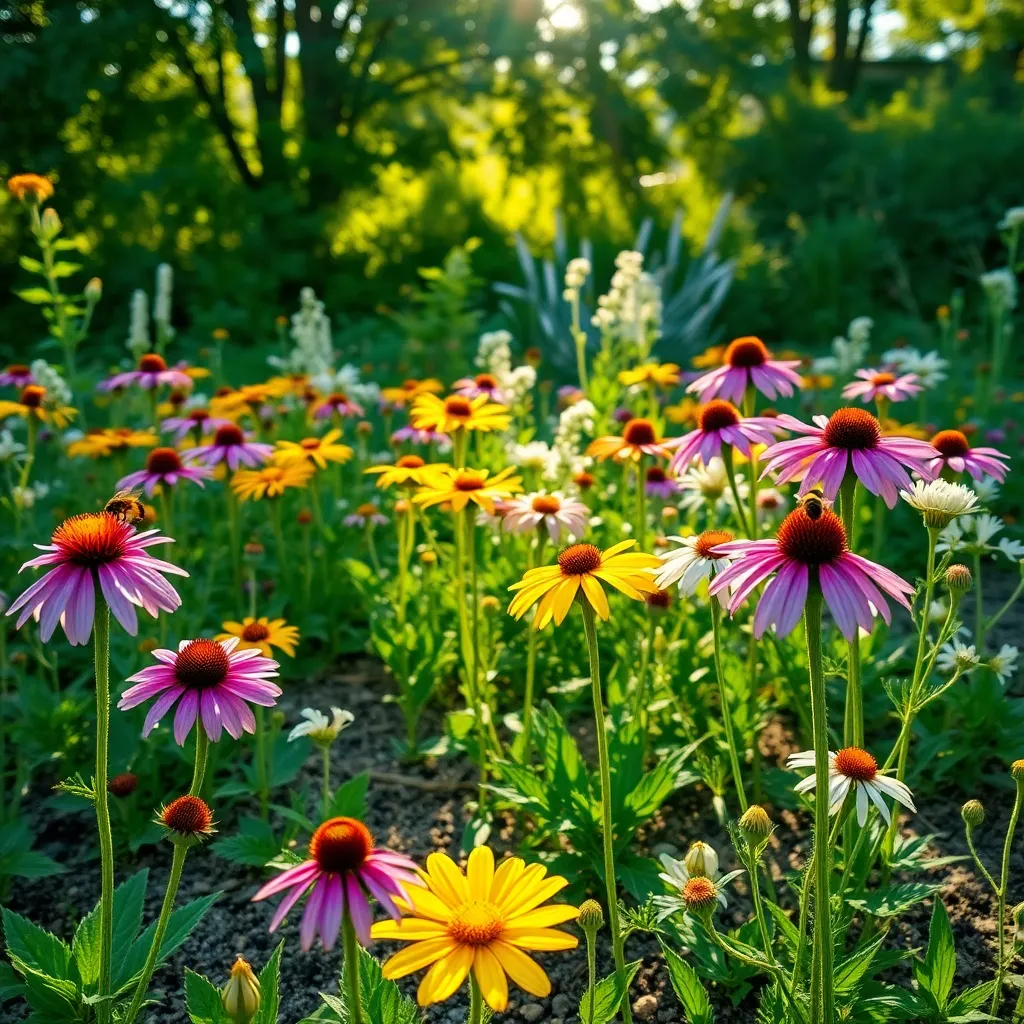
Native wildflowers are an excellent choice for low-maintenance gardens due to their resilience and adaptability. These plants are naturally suited to your local climate and soil conditions, making them easy to care for and beneficial for the environment.
When selecting native wildflowers, consider their sunlight and soil requirements to ensure they thrive. For example, if you have a sunny spot with well-drained soil, consider planting Black-eyed Susans or Purple Coneflowers, which are both hardy and drought-tolerant.
To maximize the benefits of native wildflowers, group them in clusters to create attractive displays that also support pollinators. Bees, butterflies, and other beneficial insects are drawn to these plants, which can enhance the ecological balance in your garden.
For best results, plant wildflower seeds or seedlings in the fall or early spring when the soil is moist. Regular watering is crucial during the establishment phase, but once settled, these plants require minimal watering, making them a low-effort addition to any garden.
Conclusion: Growing Success with These Plants
As we’ve explored the top five low-maintenance plants for your garden—succulents, lavender, hostas, ferns, and ornamental grasses—each offers unique benefits that can not only beautify your outdoor space but also nurture the relationships you cultivate. Just as these plants require little yet consistent care to thrive, so too do our relationships benefit from mindful, yet manageable attention. By understanding the importance of adaptability, resilience, nurturing, consistency, and space in both gardening and relationships, you’re equipped to create a harmonious environment in all aspects of life.
To set this knowledge into motion, why not choose one plant to research further and consider adding it to your garden this week? This small step can be the beginning of a serene space that invites more meaningful connections.
Remember, growth and relationship success are journeys that flourish with intentionality. Bookmark this article to revisit these concepts and draw inspiration whenever needed. As you nurture your garden, may you also nurture the relationships that bring beauty and joy to your life. Your path to thriving connections is just a plant—or a step—away.

